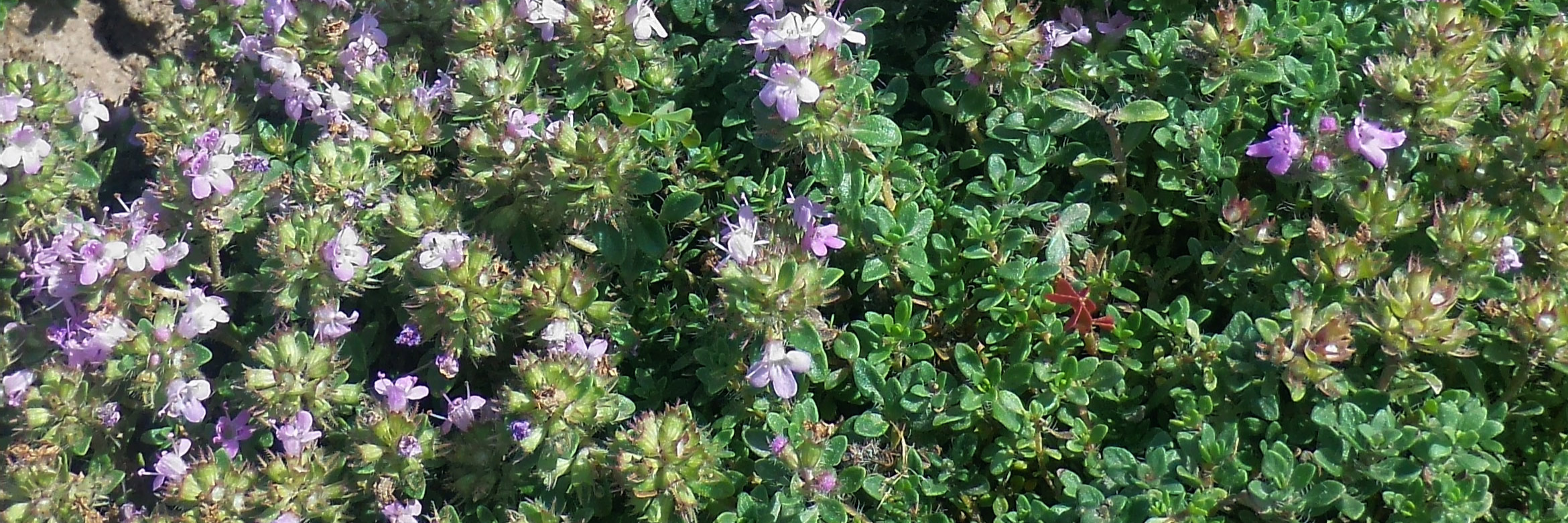
Thymus praecox ssp. arcticus (wild thyme)
Thymus praecox ssp. arcticus is an evergreen, ground-covering shrub growing up 10 cm. It derives from central-, southern- and western Europe, but is naturalized elsewhere in the world. Thyme grows best in sandy or well-drained soils and tolerates drought once established. Flowers of wild thyme are small, pink-purple and valuable for pollinators. Thyme, mostly the species T. vulgaris, is widely used as herb, either raw or dried, and often used flavoring cooked food. The leaves should be harvested before flowering.
As a medicinal plant, wild thyme has been used for many purposes. People have been drinking thyme-tea to sooth sore throats, cough, asthma, and bronchitis, as well as using it against stomach issues and kidney stone. In addition, it has been associated with women and gynecological issues; against illnesses in the uterus, while giving birth, to increase breast milk production and regulate menstruation. Other uses include pain relieve and wound healing. An essential oil from thyme is used in perfumes and soaps.
Cultivation
Sow the seeds in April in a broadcast tray under light conditions, approximately 20-23 °C. Sow the seeds in tray substrate. Avoid covering the seeds; wild thyme needs light to germinate. When large enough to handle transplant the plants into small individual pots in pot substrate. The pots can be placed in an unheated greenhouse, or outside when the risk of frost is over. When fully rooted in the pots, plant outside in field.
Family: Lamiaceae
Swedish: backtimjan
Finnish: harmaa-ajuruohoa
Norwegian: norsk timian
Danish: skotsk timian
Icelandic: blóðberg

Cut the inflorescence with scissors or shake the plant, and let the mature seeds fall into a bag.
Wild thyme prefers dry, sandy or rocky soil and thrives in full sun. It requires good drainage and is rather tolerant to frost and drought. A layer of gravel on the soil can be helpful to prevent wet soils, especially during the winter. Seed harvest will not be obtained until the second year. Flowering time for wild thyme is between May and July and harvesting of the seeds will normally take place in July to August. Always harvest in dry conditions. The seeds are ripe when they start to fall out of the inflorescence. Cut the inflorescence with scissors or shake the plant, and let the mature seeds fall into a bag.
